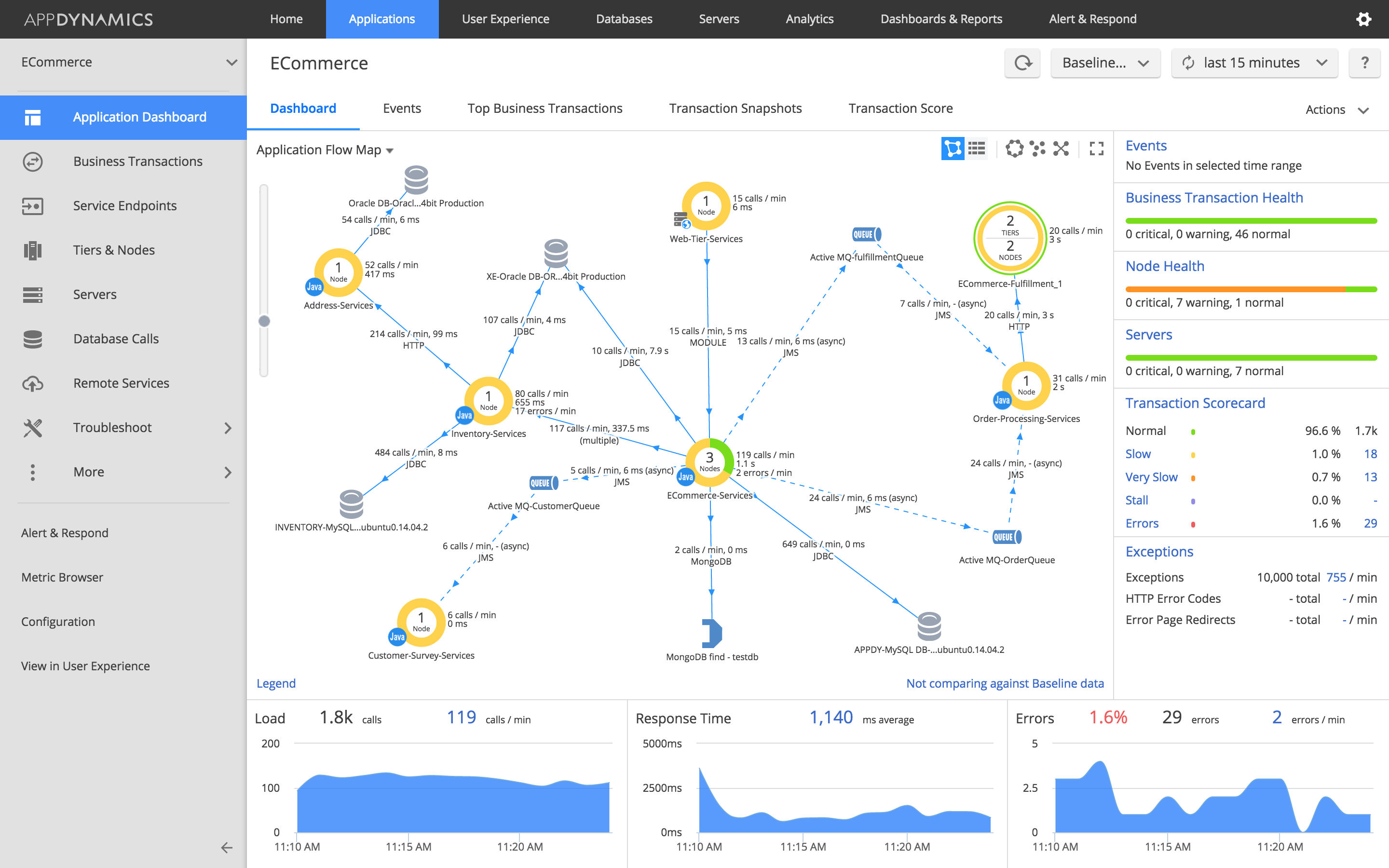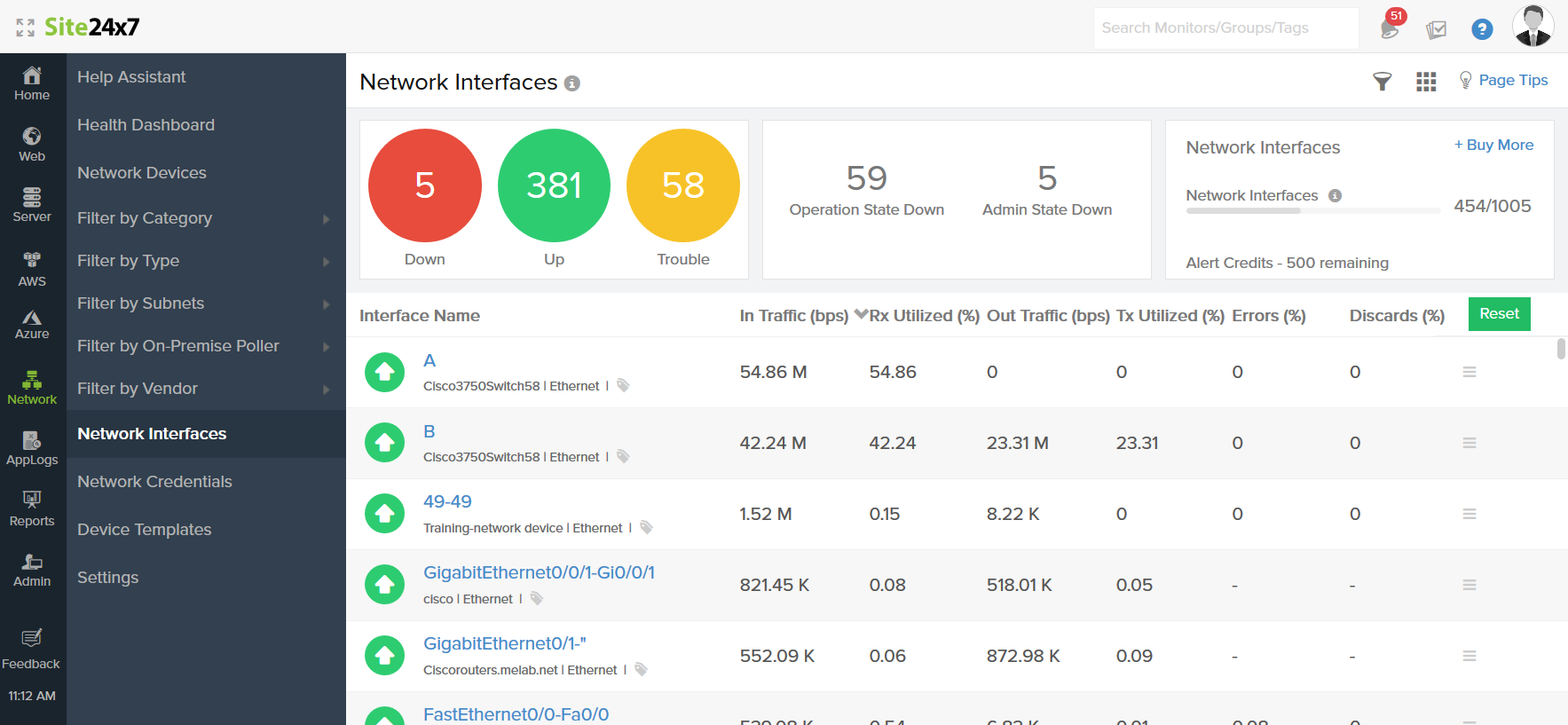In an era where digital transformation is ubiquitous, a major part of daily life is spent glued to screens, in both business and personal spheres. We’re interacting with numerous websites, applications, and digital services daily. During these digital interactions, we occasionally come across websites with slow-running pages or 404/server error messages. Such pages aren’t only inconvenient, but can also have significant reputational, opportunity, and financial costs for businesses owning the web properties.
This is why effective website performance and availability monitoring is crucial for organizations. Synthetic monitoring tools facilitate this monitoring by helping IT teams simulate website visitor requests to test specific functions, availability, and performance of their applications, websites, and API services. In this article, we’ll discuss the top six synthetic monitoring and testing tools on the market today.
Pingdom

SolarWinds® Pingdom® is a popular website performance and availability monitoring solution, which offers synthetic monitoring capabilities. With this solution, setting up synthetic monitoring takes only a few simple steps. It offers uptime monitoring with servers spread across 100 global locations and sends instant notifications for downtime via email, SMS, Slack, OpsGenie, PagerDuty, and more. It’s mechanisms recheck every error to reduce false positives. To ensure the website is running smoothly, teams can use its granular webpage load testing features and monitor page speed over a period to track and fix the bottlenecks affecting load times. The solution also offers transaction monitoring with a testing frequency ranging from five minutes to once a day. To set up transaction monitoring, one can either use the traditional scripting or try out its more intuitive website transaction recorder. With the recorder, as one browses through their website to recreate a user-journey or flow, the journey gets recorded and converted into steps for a transaction check. You can learn more about the solution by visiting Pingdom.com or starting a 14-day free trial now.
AppDynamics

AppDynamics by Cisco offers a browser synthetic monitoring product, which tracks website availability with 26 globally distributed cloud-based agents. Before sending a downtime notification, AppDynamics retests errors. Like Pingdom, the product also offers waterfall charts for tracking page speed and load times for every page component. It allows the use of testing scripts to simulate and measure user journeys across multiple pages. While the product offers all basic and advanced synthetic monitoring features, its private synthetic agents are a major differentiator. With the private agents, teams can test their internal applications, which aren’t accessible publicly.
New Relic

New Relic is known for its application performance monitoring platform and offers synthetic monitoring capabilities under its product New Relic Synthetics. Like the other two tools discussed above, it also has globally distributed servers to test website functionality, availability, and performance issues. One can monitor several load time metrics and simulated browser transactions. For reducing false-alerts, the product also performs rechecks, termed as the 3-strike alert policy. The product integrates New Relic APM products to offer end-to-end monitoring capabilities.
Uptrends

IT Teams can also checkout Uptrends Synthetics, which is among leading solutions for website performance monitoring. It offers more than 200 servers across the globe to check website issues. In addition to tracking uptime, page speed metrics, and transactions, Uptrends also offers a bandwidth throttling feature to test website performance under varying network conditions. With its instant alerts and reports, teams can perform troubleshooting in near real-time. While the solution is simple to use and feature-rich, the monitoring of transactions and APIs is available only in the higher-priced Business and Enterprise plans.
Site24x7

Site24x7 offers a website monitoring product for synthetic transaction monitoring. It monitors website or application performance from 100 worldwide locations, and sends alerts via email, SMS, and push notifications. Organizations can even use third-party integrations to set up alerts on their preferred applications (PagerDuty, Slack, HipChat, etc.). The product also offers a recorder to set up transaction monitoring. The product has a clean interface and is fairly simple to set up. The product offers various plans and add-ons to meet the website monitoring requirements for businesses of all sizes.
Catchpoint

If your business is spread across the multiple geographies and you need comprehensive tracking of uptime, then Catchpoint might suit your requirements. It offers 700-plus nodes for monitoring website uptime and performance issues in 80-plus countries across the globe. What makes Catchpoint different from other solutions discussed so far, is in addition to tracking websites and applications over common internet protocols (HTTP, TCP, UDP, etc.), it also supports MQTT. The protocol is most useful for organizations needing to track their IoT devices. Again, with 20-plus monitor types, the solution might prove to be a bit complex for organizations looking for a straightforward synthetic monitoring solution.
Conclusion
We’ve discussed some of the most popular synthetic monitoring tools available in the market. While most of these tools can help teams effectively track and get the most out of their websites, applications, and APIs, teams should consider evaluating the usability factors before shortlisting a solution. For such evaluation, organizations should consider running a proof of concept (POC) to shortlist a solution. Moreover, organizations should also factor in their organization’s roadmap and future monitoring needs. As businesses adopt cloud-native technologies, they need future-ready solutions with easy scalability for end-to-end APM.
In our evaluation, we found while solutions like Pingdom and AppDynamics are simple to set up, not all tools fare equally in terms of ease of installation and usage. Another point to consider is the pricing of these tools, as some tools restrict certain key features in their basic plans. We found Pingdom delivered maximum value, with its plans starting at just $10 per month. Another major advantage of Pingdom is it also offers real user monitoring and is a part of the SolarWinds Application Performance Monitoring (APM) Suite, which offers full-stack monitoring across cloud and hybrid environments. We recommend a 14-day free trial of Pingdom to start your web performance monitoring.
